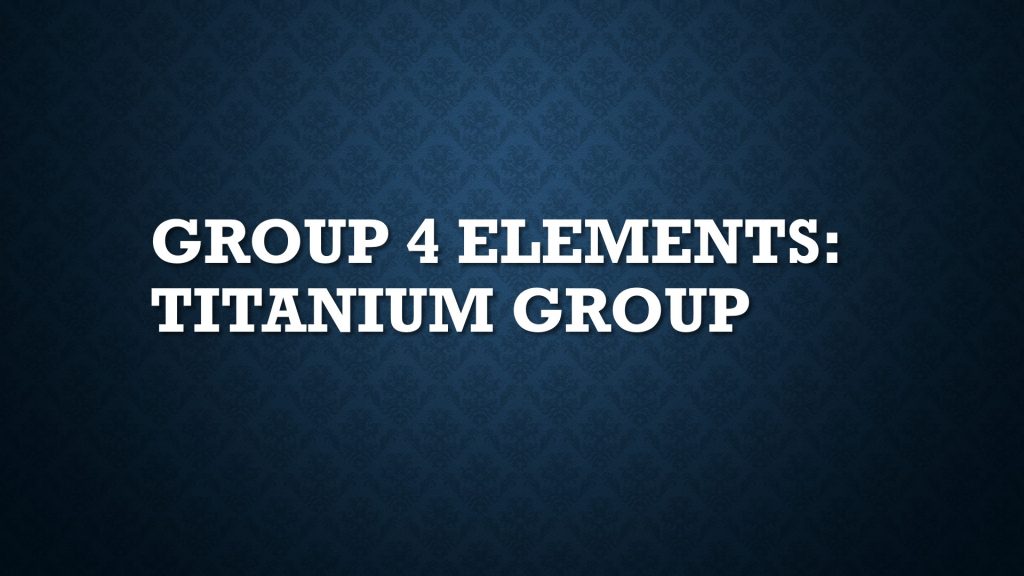Group 4 Elements are from the second group of transition metals in the modern periodic table. The elements of this group are Titanium(Ti), Zirconium(Zr), Hafnium(Hf), and Rutherfordium(Rf). This group is also called the Titanium Group after its lightest member.

Index
History
Zircon was known as a gemstone from ancient times. It was first discovered to contain a new element until the work of German chemist Martin Heinrich Klaproth in 1789 but was unable to isolate the element. In 1824, Swedish chemist Jons Jakob Berzelius isolated zirconium by heating a mixture of potassium and potassium zirconium fluoride in an iron tube.
Titanium was first identified in ilmenite sand by Cornish mineralogist William Gregor, in 1791. Berzelius was the first to extract an impure form of titanium metal in 1825.
Hafnium was discovered by Anton Eduard van Arkel and Jan Hendrik de Boer, on passing hafnium tetraiodide vapor over a heated tungsten filament in 1924.
Rutherfordium was claimed to be discovered by bombarding a plutonium-242 target with neon-22 ions by Joint Institute for Nuclear Research (JINR) in 1964. Much more conclusive evidence was obtained by the University of California, Berkeley in 1969, by bombarding a californium-249 target with carbon-12 ions.
The Group 4 Elements
All group 4 elements are hard, refractory metals. Their reactivity is entirely masked due to the formation of a dense oxide layer that protects them from corrosion, as well as attack by many acids and alkalis.
| Property | Titanium | Zirconium | Hafnium | Rutherfordium |
| Atomic Symbol | Ti | Zr | Hf | Rf |
| Atomic Number | 22 | 40 | 72 | 104 |
| Atomic Mass(amu) | 47.867 | 91.224 | 178.486 | 267(predicted) |
| Valence Electronic Configuration | [Ar]3d24s2 | [Kr]4d25s2 | [Xe]4f145d26s2 | [Rn]5f146d27s2 |
| Atomic Radii(pm) | 147 | 160 | 159 | 150 (estimated) |
| Melting/Boiling Point(K) | 1941/3560 | 2128/4650 | 2506/4876 | 2400/5800 |
| Density(g cm3) | 4.5 | 6.52 | 13.31 | 17 |
| First Ionization Energy(kJ mol-1) | 658.8 | 640.1 | 658.5 | 580 |
| Common Oxidation State(s) | +2, +3, +4 | +4 | +4 | +3, +4 |
| Electronegativity | 1.54 | 1.33 | 1.3 | – |
Applications
- Hafnium and zirconium have been used in nuclear reactors.
- Zirconium is used in the cladding of fuel rods in nuclear reactors.
- Titanium alloys have a wide range of applications – in aircraft, spacecraft, golf clubs, laptops, etc.
- Titanium is used in different medical applications including surgical implements and implants.
